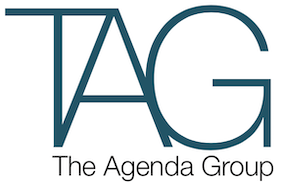Three years of scrimping and saving have produced a war chest full of cash, and the political necessity for a State Budget with lots of headline grabbing, big dollar infrastructure initiatives.
Those looking to find fault with the 2014-15 Victorian budget at first blush have zeroed in on those areas which appear to have received more modest treatment –such as health – by comparison to those portfolios which have major new capital outlays like roads, public transport and education.
The budget appears to have something for everyone – from iconic new rail tunnels and freeways – through to local school upgrades and neighbourhood renewal projects.
The Coalition Government’s return to a more conventional ‘sell’ of the Budget over recent weeks has, according to a tally by one Melbourne radio station, seen some 120 announcements by the Napthine Government of new initiatives and spending before the Budget had even been released.
Announcement season hasn’t ended with the release of the Budget.
Throughout the Budget there are funding allocations for programs and capital works, the location and detail of which, have not yet been announced.
The $50 million Regional Roads Package and the $50 million Arterial Road Restoration fund will both enable a string of localised announcements between now and November 29th.
There are seven as yet unannounced level crossing upgrades that have received funding for planning and preconstruction works. Expect all seven sites to be selected and announced by election day.
Implementation of Plan Melbourne includes an $11 million allocation which will cover a local pocket park fund and a 20 minute neighbourhood fund. Details of both funds are scant, but they are suggestive of capacity to rollout of lots of localised projects.
We highlight these items not simply to warn you to beware of politicians wielding press releases in coming months. More importantly these programs will be of interest and value to many communities, and gaining an early understanding of their purpose and function will enable communities and stakeholders to start work on putting forward their own claims for consideration.
Bring on the election promises.
Further capacity for new spending – election promises – either recurrent program commitments or new capital works, is hidden away in the budget papers.
For those with the inclination to investigate, Table 4.5 Application of cash resources for the general government sector, on page 62 of Budget Paper 2. Strategy and Outllook provide the line item: Capital provision approved but not yet allocated. The notes to the table explain this as an ‘amount available to be allocated to specific departments and projects in future budgets including capital contributions’.
Over the forward estimate period, an amount of $1.7 billion is set aside as unallocated funds.
In an election context these unallocated funds can be fully tapped to finance new commitments announced post-budget – i.e. election promises – without changing the projected budget bottom lines.
The Budget papers cover the four financial years until 2017-18, and include these contingency funds in the out years. Government has even greater flexibility in that the timing of delivery and financing of an election promise – either program or capital – that extends beyond the current forward period can draw on an as yet unspecified and unappropriated contingency allowance for 2018-19 and beyond.
The Government may buy itself further unallocated funding capacity with which to finance election commitments through use of PPPs on major infrastructure projects.
As Budget Paper No. 2 explains on page 51:
‘Net debt is likely to be even lower over the budget and forward estimates than currently forecast if infrastructure projects currently assumed to be state procured proceed as public private partnerships. In line with conservative and prudent budget practice, the Government is accounting for the Melbourne Rail Link, East West Link – Western Section and the school capital program as traditional state-procured projects. If, as is expected, components of these programs are procured as public private partnerships then cash flows associated with a traditional procurement will be reversed and replaced by an estimated finance lease liability at the expected time of commercial acceptance of the project. In the case of the two biggest projects, this would result in lower net debt during the forward estimates compared with the current treatment, as the lease liabilities will be recognised beyond the forward estimates’’.
So if the Government can in the next few months settle on some aspects of these infrastructure projects which can be packaged up and delivered as PPPs, it will free up some headroom for further spending within the forecast surplus outcome parameters.
Of course it also remains open to both sides of politics to make election commitments that will need to be funded by identified offsets – either cuts to expenditure and/or new revenue measures.
The release of the Budget six months out from the next election provides the Labor Opposition with some financial parameters to finalise its own election policy agenda. As well as tapping the same unallocated capital funds, it also has some flexibility to carve out some room for itself and its own spending plans by jettisoning or amending the Napthine Government’s announced, and now budgeted, initiatives.
All of which means the books aren’t yet closed for either side of politics as they finalise their election agendas and plan their campaigns.
For anyone looking to influence election policy, there’s still time and there’s certainly still money available for a little while longer.
